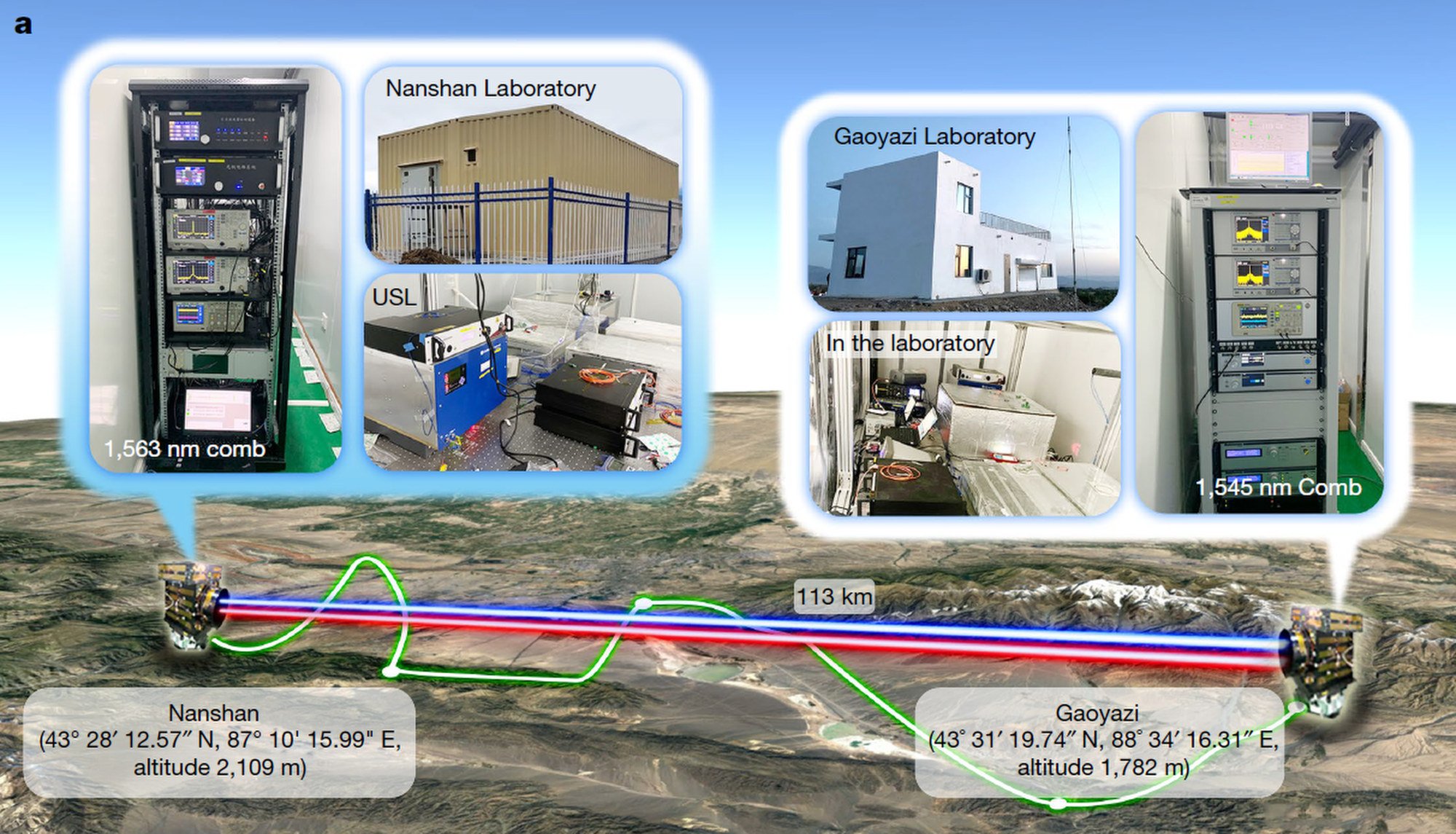China has completed a laser test that could pave the way for developing high-precision ground-to-satellite communications, as per reports. The experiment could also lead to fundamental physics discoveries and redefine the second as a unit of time.
The experiment was carried out by Chinese scientists at Urumqi, the capital of the Xinjiang Uygur autonomous region in western China. However, the time and date of the test are not mentioned in the SCMP report.
The report outlined the process and stated that the Chinese researchers set up two terminals in laboratories that were 113 kilometers (70 km) away. Each terminal had a laser, a telescope, and two optical frequency combs for precisely measuring light frequencies.
They determined and validated the time by sending information-carrying laser pulses between the two telescopes. According to the research team led by quantum physicist Pan Jianwei at the University of Science and Technology of China (USTC), previous attempts to transmit signals through the open air have been confined to a few dozen kilometers.

Chinese researchers said optical fibers had been used to relay signals beyond 1,000 kilometers with remarkable precision. However, because it is impossible to stretch wires between specific places, researchers have attempted to convey signals over the open air.
Their findings were published on Wednesday in the peer-reviewed journal Nature. The latest test is significant in improving satellite navigation.
For instance, building a global network of optical clocks, which are incredibly precise timekeeping instruments that can help boost the precision of satellite navigation services, requires scientists to be able to transfer signals over large distances.
Optical technologies can advance the next generation of global navigation satellite systems (GNSS). Optical clocks, in particular, have the potential to support or even replace microwave-based clocks, with the possibility to improve GNSS position determination due to their lower frequency instabilities.
Future Applications
David Gozzard, a fellow at the International Center for Radio Astronomy Research in Australia who was not involved in the study, told the SCMP that links through the open air were required in any situation where installing a fiber-optic cable would be prohibitively expensive or impractical, such as when connecting a spacecraft to the ground.
Gozzard, a researcher on laser systems for high-precision measurement, also noted that this technology has drawbacks, including power loss and atmospheric turbulence that can cause frequent signal failures.
“Whenever a time signal is transmitted from one location to the other, turbulence causes the light to randomly speed up or slow down, so the time signal arrives after different amounts of flight time, ruining the timing synchronization,” he said.
He explained that the Chinese team had proven the technology across 100 kilometers on the ground. This demonstrates the technology’s ability to withstand the tremendous power loss and a significant amount of turbulence encountered on a link from the ground to a spacecraft.
Long-distance time signal transmission may pave the way for new insights into the fundamental laws of physics, including the verification of general relativity, the hunt for gravitational waves and dark matter, and long-range quantum networks, the report noted.
Additionally, Chinese scientists claimed that by using their methodology, scientists could be able to redefine the second as a unit of time. The current definition of the second was established in 1967. It is centered on a count of the radiation cycles that caesium atoms release as they switch between quantum states.
USA’s Efforts To Build Laser-Based Clocks
The United States is also looking to develop laser-based clocks. These optical clocks would be 100 times more accurate than today’s most precise models while remaining tiny and durable enough to be carried on army vehicles and fighter jets.
Today, precision timing is crucial for many commercial and government applications, including financial networks and communication systems. Precision timing is also necessary for vital military activities, including sensor fusion and precise navigation.
US military authorities, particularly those in the Army, have been increasingly focused on finding alternatives to GPS. The rationale for seeking alternatives to GPS is to ensure positioning, timing, and navigation in contested areas, which is prone to jamming and spoofing via false signals.
Instead of the microwaves that are employed by today’s atomic clocks, optical clocks use specialized lasers. However, current models are huge and fussy, although they have been demonstrated to work in lab settings.
- Contact the author at ashishmichel@gmail.com
- Follow EurAsian Times on Google News